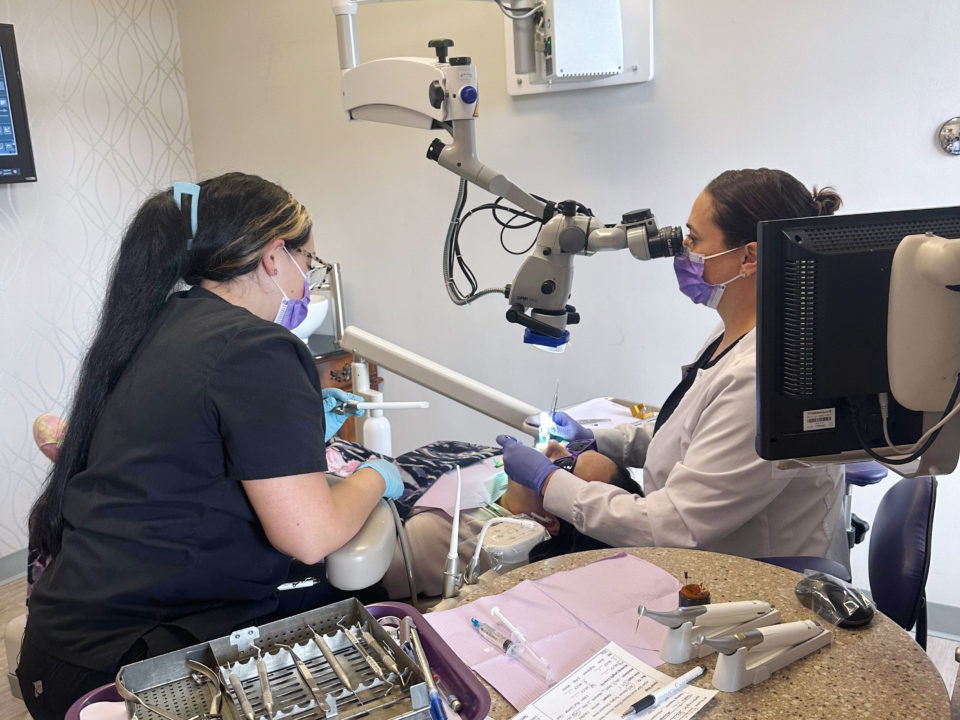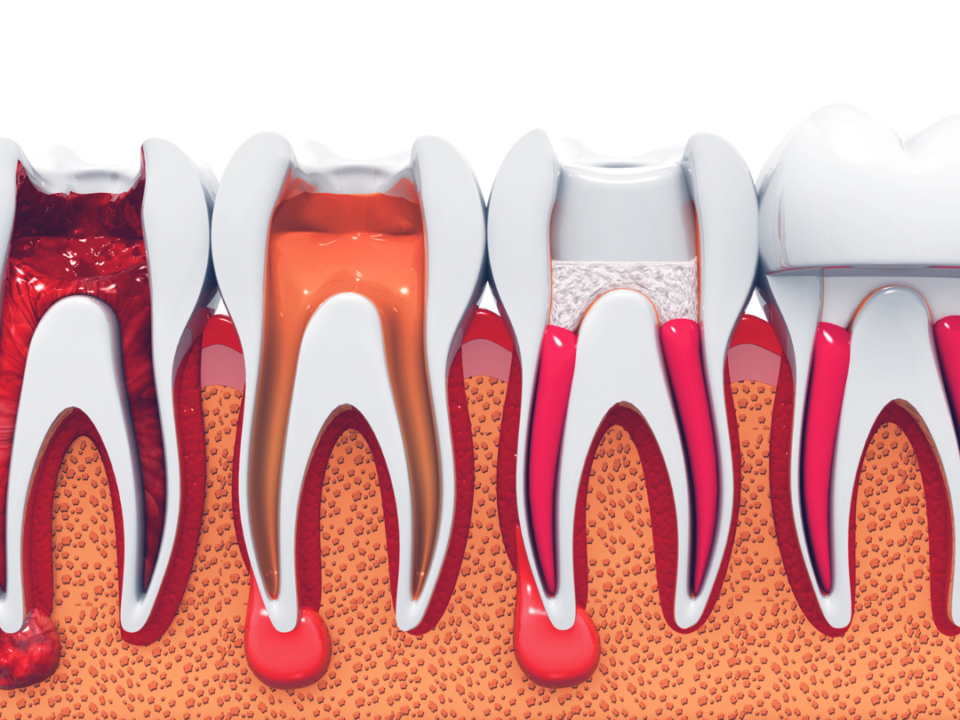
Why Choose an Endodontist
June 26, 2023
How Long For a Root Canal to Heal?
July 16, 2023
Why Choose an Endodontist
June 26, 2023
How Long For a Root Canal to Heal?
July 16, 2023Deep decay in a tooth may require root canal therapy to correct, but you will also have the alternative of getting an extraction. Which one should you choose? Recognizing and weighing each treatment’s pros and cons will help you choose the best option for your current condition and your future smile.
Advantages and Disadvantages of Dental Extraction
Tooth extraction can have some benefits. However, always weigh these against the other treatment options before finalizing your decision. Having a tooth pulled means that you will have a permanent change in your smile.
Lower Initial Price But Higher Cost Over Time
Some people choose extraction because it has a lower initial cost. However, this should not become the only deciding factor in the type of treatment you get for a tooth.
Over time, you may spend more money after an extraction, especially if you have future complications. Dental alignment changes frequently happen after people lose teeth as the remaining teeth shift in the mouth. You may need a future Invisalign treatment to correct the problem, which adds to the overall cost.
Alternatively, you could opt for a bridge or implant to fill the space, both of which cost much more than a root canal and crown.
More Convenient But Leads to Future Bone Loss
For people who see their dentist first for evaluation of dental pain, the dentist may recommend extraction at their practice. This makes the process more convenient for the patient, who does not have to find a specialist and go to another dental practitioner.
However, the convenience comes with the loss of a permanent tooth. Tooth roots support the bone structure in the jaw. When you lose an adult tooth, there is nothing to hold the bone in the jaw where the tooth was. Over time, the jaw bone at that site erodes. If you have multiple teeth lost, your face can even change shape from this bone loss. Denture wearers need frequent replacements of their dentures to accommodate their changing bone structure.
You can opt to have a dental implant. This option prevents bone loss by placing a permanent titanium screw into the jaw that supports a crown to replace the tooth. However, not all dentists perform implants, which means that you’ll need to find one who does. Additionally, the process takes several months to a year.
Pros and Cons of Root Canal Therapy
Root canal therapy is a simple, non-surgical endodontic procedure that can save your natural tooth. With root canal therapy, the endodontist removes infected pulp and bacteria that erode the inside of your tooth. Once the doctor clears the root canals, your tooth pain disappears. Like all procedures, root canal therapy has pros and cons that you must consider before deciding on a treatment method.
Saves the Tooth
If you prioritize keeping your natural teeth as long as possible, root canal therapy will be a better option than extraction. By keeping your natural teeth, you’ll also help to maintain the integrity of your jaw.
If you opt to have an implant after extraction, even the best implants will not feel exactly like your natural teeth. Plus, you’ll need to schedule and recover from multiple dental surgeries over several months when you get an implant to replace an extracted tooth.
While root canal therapy can save a tooth, you do not have forever to make the decision. Waiting too long can compromise the bone supporting the tooth, which may lead to a recommendation for extraction. Make your decision on the type of treatment you want as soon as possible to avoid severe decay inside the tooth that would require extraction.
Painless Process with Fast Healing
Root canals are painless procedures that do not require surgery and heal within a few days. Endodontists who perform root canals have extra knowledge of controlling discomfort during treatment to ensure that their patients feel completely at ease throughout their procedures.
You don’t need to feel fear about getting a root canal. Caring endodontists who use innovative methods and tools ensure that you receive treatment painlessly. We feel so strongly about showcasing the painless nature of root canals at Innovative Endodontics that we’ve made it our mission to be changing this procedure’s reputation.
The healing process after a root canal only requires a day or two for the greatest discomfort to subside. Patients often liken this pain to tooth sensitivity or pressure that over-the-counter pain medicine readily eases.
After you’ve recovered from the procedure, your initial source of dental pain, inflammation inside the tooth, is gone, and so is your pain. Root canal therapy gives you lasting relief without sacrificing your tooth.
Fewer Complications or Hidden Fees
Root canals have a very high rate of success, over 93%. Consequently, you’re not likely to experience complications after root canal therapy.
Following a root canal, you might need a crown over a treated molar. While you will need to visit your dentist for a crown, the cost of the crown and root canal will likely be much less than extraction and an implant or bridge. Plus, you preserve your natural tooth and can avoid future complications caused by bone loss that happens after extraction.
Since you know up front that you will need a root canal and crown, you know from the start how much you’ll spend. With tooth extraction, you may not know whether you want an implant or bridge until later, which adds to the total cost and time before you can have an intact smile back.
Trust Us at Innovative Endodontics to Give You the Most Comfortable Root Canal Experience Possible
If you opt for root canal therapy to save your tooth or want to know more about the benefits of a root canal vs extraction, contact us at soon as possible at Innovative Endodontics. We are changing the reputation of the root canal into a positive one. You’ll see for yourself that the treatment is a painless way to avoid losing a tooth.




